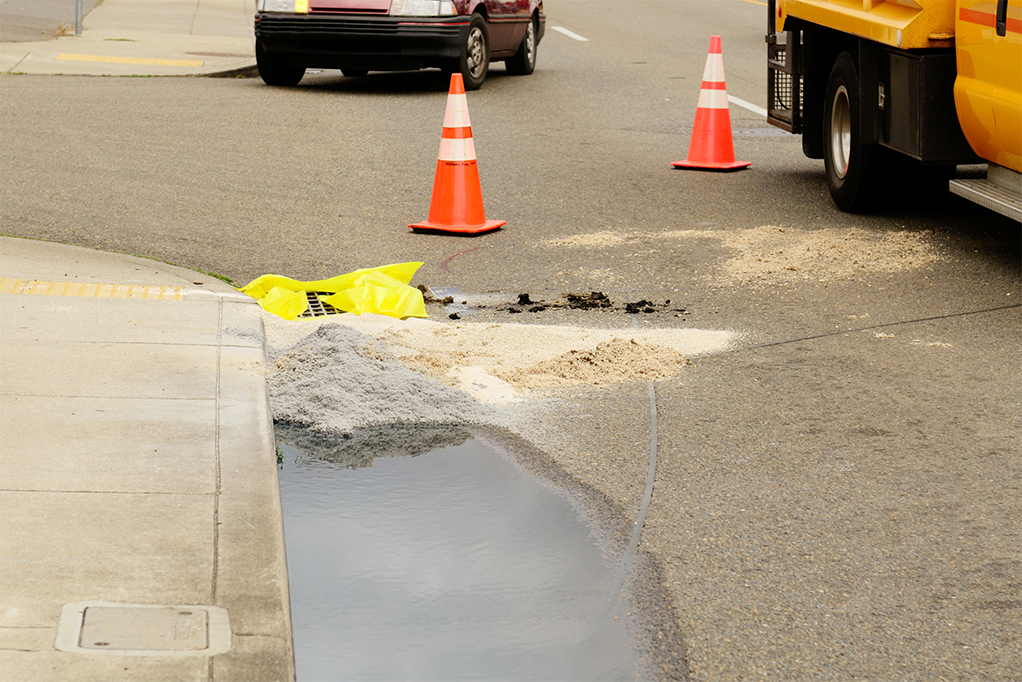Stormwater pollution is a critical environmental issue that impacts water quality, public health, the environment, and the economy. From the runoff on our streets to the chemicals and pollutants entering our waterways, the consequences are far-reaching. But there’s hope—individuals and businesses alike have the power to make a positive impact.
Tag: water pollution
Exploring the Broad Impact of Polluted Stormwater on U.S. Waters Stormwater pollution in the United States is a critical environmental challenge with far-reaching impacts. This blog unravels how contaminated runoff from urban and rural areas significantly affects aquatic ecosystems, public health, and the economy. We delve into the ways pollutants like heavy metals and chemicals
Impact of Stormwater Pollution in the US | ComplianceGORead More »
How to be SWPPP Compliant with On-Site Storage Fertilizers Where fertilization is necessary, always follow these restrictions: Apply the fertilizer according to the manufacturer’s specifications.Apply at the appropriate time of the year.Avoid fertilizer use prior to heavy rain.Never apply fertilizer to frozen ground.Never apply to conveyance channels with flowing water.Be sure to sweep off sidewalks
How to be SWPPP Compliant with On-Site Storage | ComplianceGORead More »
How to Handle Dangerous Substances on Site Oils, Vehicle Maintenance, and Fluids When the construction site has fuels, oils, and vehicle maintenance fluids on site, there are specific stormwater BMPs and SWPPP regulations that should be followed: Ensure BMP specifications are included in the StormWater Pollution Prevention Plan, or SWPPP, for oil and fuel storage
How to Handle Dangerous Substances on Site | ComplianceGORead More »
Ways to Prevent Erosion and Sedimentation Stormwater Conveyances and Sediment Basins Preventing erosion and sedimentation is not as hard as it sounds. We will discuss some ideas below: Stormwater conveyance channels are used to direct water properly and to avoid unstabilized areas. They are designed and installed to minimize erosion. Conveyance channels should use velocity
Ways to Prevent Erosion and Sedimentation | ComplianceGORead More »
Why It’s So Important to Pick Up Your Trash Waste Management Managing waste products is a concern on any site. Waste products can cause significant pollution if they escape into a water body. Any receptacles you use need to protect waste from both water and wind to prevent them from escaping. This is often done
Why It’s So Important to Pick Up Your Trash | ComplianceGORead More »
Why Inlet Protection Can’t be the First Line of Defense Storm Drain Inlet Protection According to just about every permit there is, storm drains must be protected. Most permits require a combination of sediment and erosion controls to prevent sediment and pollutants from reaching storm drains. The idea is that storm drain inlet protection is
Why Inlet Protection Can’t be the First Line of Defense | ComplianceGORead More »
Do You Know What the Cheapest BMP is? The cheapest and often most effective BMP for SWPPP compliance is to use the natural vegetation that surrounds the area under construction. It will help you stay compliant and efficient with minimal effort! Here are some of the best ways to utilize natural vegetation as a BMP
Do You Know What the Cheapest BMP is? | ComplianceGORead More »
Do You Know Which Watershed You Are In? Do you? Because I didn’t! I didn’t even know what a watershed was before I started working with stormwater. So let’s begin by defining it. Essentially watersheds are any piece of land that water runs off of to a waterbody — which is pretty much everywhere. Therefore,
Do You Know Which Watershed You Are In? | ComplianceGORead More »
Critical SWPPP Map Updates – What do you update? The SWPPP Map is a critical inspection tool to make sure that BMPs are in place and inspections are covering all the appropriate areas of concern. To ensure the SWPPP map proves as useful as it can be, it needs to be constantly updated to match
Critical SWPPP Map Updates – What do you update? | ComplianceGORead More »










